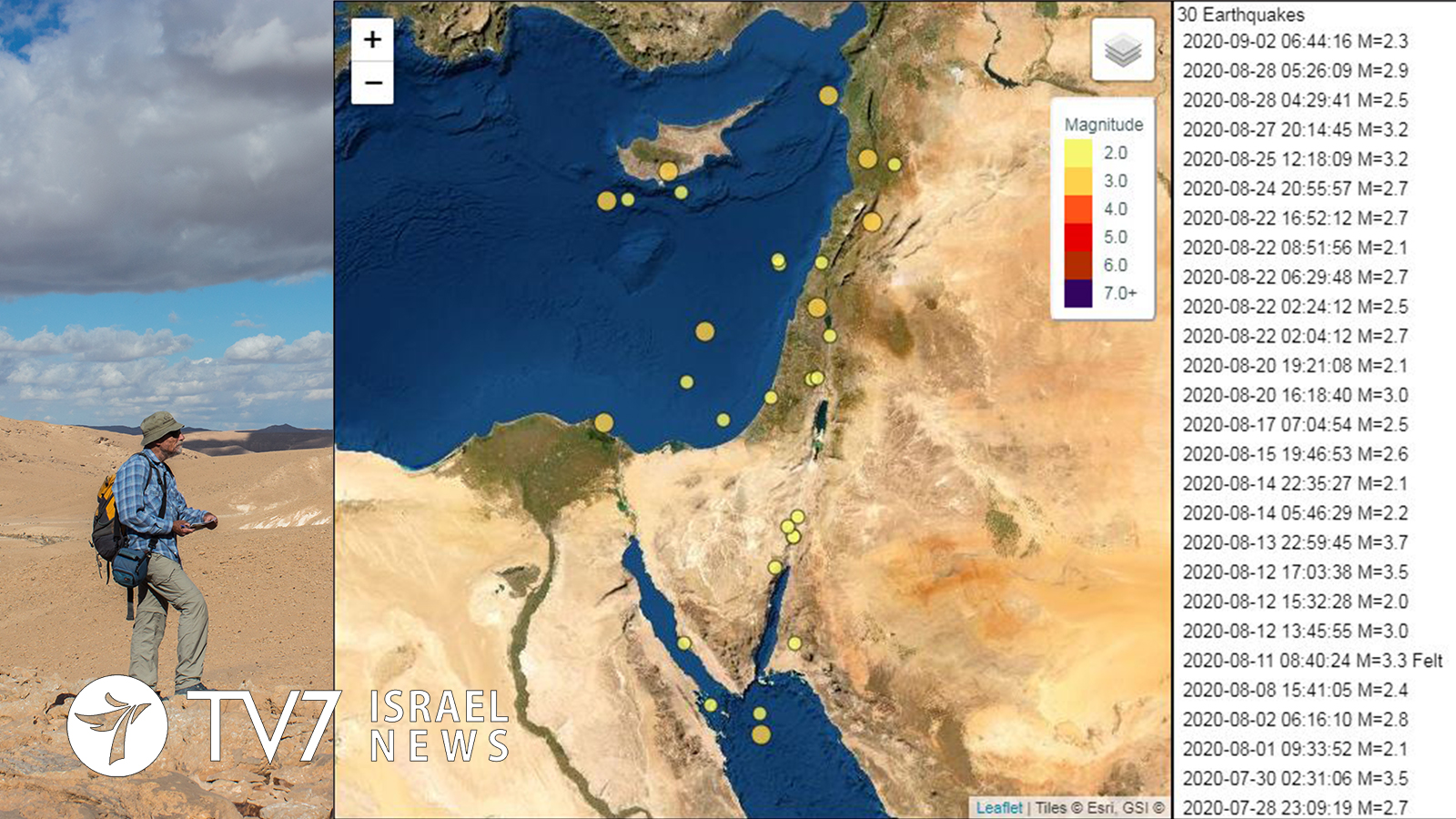An astonishing 7,505 earthquakes were registered worldwide between 1 August and 2 September 2020 by the European-Mediterranean Seismological Centre (EMSC), which tracks seismic activity in real time.
As of this posting, there have been 102 earthquakes today alone, including 2 with magnitudes of 5 or higher. A 5.2 shook the South Island of New Zealand at 10:12 local time and a 5.0 hit Vanuatu at 02:34.
Yesterday there were 5 earthquakes that ranged 5 magnitude and over. A 5.4 magnitude (M5.4) was recorded in Papua, Indonesia; an M5.3 south of Panama, M5.2 in Seram, Indonesia, M5.1 in Vanuatu and another M5.1 in the South Sandwich Islands region.
The lowest recorded event was an M.08 quake in Switzerland.
It is important to keep in mind that seismic activity constantly occurs around the globe on a daily basis, recorded by sensitive seismometers to record the time, location and intensity of quakes in whole numbers or decimal fractions. The Director of Israel’s Inter-Ministerial Steering Committee for Earthquake Preparedness, Amir Yahav, told TV7 that they are so “commonplace” that “tens of thousands” are felt globally each year, but he emphasized that the vast majority are “weak in intensity and do not cause any damage.”
As an overview, anything registering below a M6.0 is unlikely to inflict more than slight damage to structures built in compliance with established building codes; while 3.5 – 5.4 are often felt but rarely result in damage, and 3.5-1.0 or less are generally not felt by inhabitants even though they are recorded.
Here’s a look at the basic categorizations:
<1.0 – 2.0: “Micro”
2.0 – 4.0: “Minor”
4.0-5.0: “Light”
5.0 – 6.0: “Moderate”
6.0 – 7.0: “Strong,” capable of wreaking destruction over 100 kilometers
7.0 – 8.0: “Major,” capable of serious destruction
8.0 – >9.0: “Great,” with damage spanning 100s of kilometers
The United States Geological Survey (USGS), a leading authority on earthquake activity worldwide and operates in conjunction with the National Earthquake Information Center (NEIC) to identify and determine the location and magnitude of global earthquakes, explains that “because of the logarithmic basis of the scale, each whole number increase in magnitude represents a tenfold increase in measured amplitude as measured on a seismogram.”
Here in Israel, the last 30 earthquakes occurred between 2 September and 23 July 2020. According to the Seismology Division of The Geological Survey of Israel (GSI), an M2.3 occurred yesterday at 06:44 AM.
There were two on 28 August, the first of which at 04:29:41 M2.5 and the second was at 05:26 with an M2.9.
27 and 25 August both encountered M3.2’s, while an M2.7 was recorded on 24 August at 20:55.
There was a great deal of seismic activity on 22 August. There were 3 separate M2.7s (at 02:04, 06:29, 16:52), in addition to an M2.5 (02:24) and M=2.1 (08:51).
This was followed by two on 20 August – a N3.0 at 16:18 and an M2.1 at 19:21. There were single events on 17 August; an M2.5 at 07:04 and a M2.6 at 19:46 on the 15th.
Two occurred on 14 August, an M2.2 at 05:46 and an M2.1 at 22:35.
The strongest quake in Israel over the past month occurred on 12 August when an M3.5 at 17:03. Two others hit the same day; an M3.0 at 13:45 and an M2.0 at 15:32.
An M3.3 hit on 11 August at 08:40, an M2.4 on 8 August at 15:41, an M2.8 at 06:16 on 2 August; with the first of the month experiencing an M2.1 at 09:33.
30 July saw an M3.5M at 02:31. In addition, there were an M2.7 at 23:09 on the 28th, an M2.1 at 15:22 on the 26th, an M3.6 at 23:20 and an M2.5 at 04:48 on the 23rd.
All 30 of the earthquakes in Israel over the past six weeks were considered to be minor, and no damage was incurred.
— By Erin Viner
